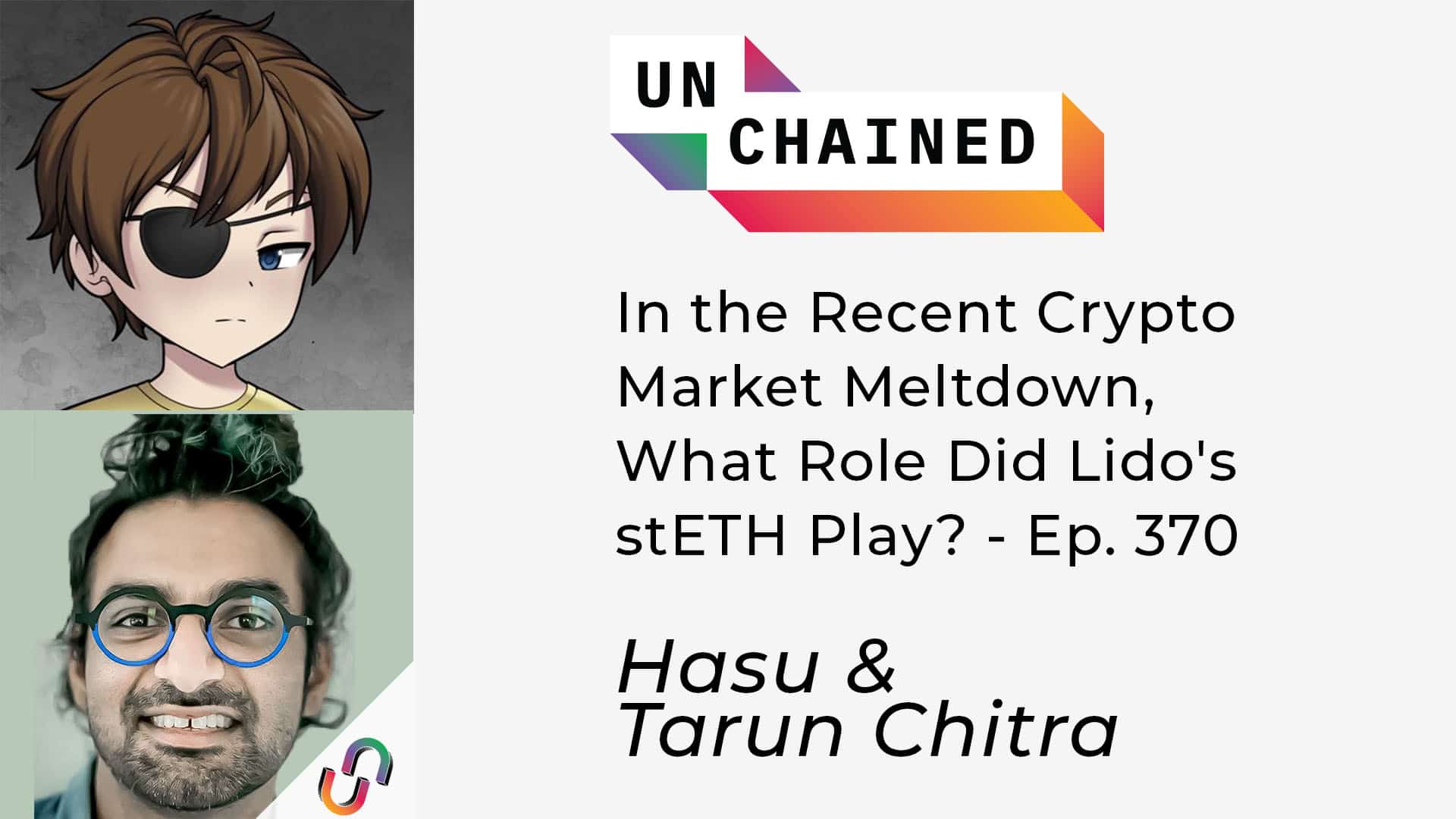Hasu, strategic advisor to Lido, and Tarun Chitra, founder of Gauntlet, explain everything about staked ETH, aka stETH, how it should be priced, Lido’s market dominance, and much more.
Show highlights:
- the role of Lido, what stETH is, and what its benefits are
- whether Ethereum’s lack of delegated proof of stake contributes to the need for stETH
- why stETH is not mispriced and why it doesn’t necessarily have to be worth 1 ETH
- the inherent risks associated with stETH
- how there was not enough liquidity to handle all the liquidations, especially in automated vaults on, for instance, Instadapp
- how automated market makers work and what Curve’s amplification factor is
- whether 3AC and Celsius had a significant impact on the stETH/ETH “de-peg”
- how does the Merge affect the liquidity of stETH
- Hasu’s and Tarun’s level of confidence that the Merge will happen this year and whether it will be a success
- what will happen to the price of stETH after the redemptions are enabled
- why Lido has achieved such a level of dominance
- how Lido decreases the cost of staking and helps improve the security of the Ethereum blockchain
- whether there is going to be a “winner take all” in the liquid staking derivatives market
- how liquidity fragmentation can cause the system to blow up
- why LDO tokenholders might not have the same incentives as ETH tokenholders
- what is Lido’s new dual governance model and what is it trying to achieve
- whether Lido should self limit its market dominance
- how Lido coordinates validators and the role of the LDO token in this coordination
- what are the lessons to be learned from the stETH situation
- how governance is a liability to DeFi protocols
Thank you to our sponsors!
Crypto.com: https://crypto.onelink.me/J9Lg/unconfirmedcardearnfeb2021Ava Labs: https://www.avax.network/
EPISODE LINKS
Hasu:
- Twitter: https://twitter.com/hasufl
- Uncommon Core Podcast: http://uncommoncore.co/podcast/
Tarun:
- Twitter: https://twitter.com/tarunchitra
stETH
- Lido’s explanation: https://twitter.com/LidoFinance/status/1535184472546889735?s=20&t=oQeB1uj7HG7Y4he-0gbcLg
- Lido’s explanation #2: https://twitter.com/LidoFinance/status/1536756933054676992?s=20&t=oQeB1uj7HG7Y4he-0gbcLg
- Hasu’s thread #1: https://twitter.com/hasufl/status/1524717773959700481?s=20&t=oQeB1uj7HG7Y4he-0gbcLg
- Hasu’s thread #2: https://twitter.com/hasufl/status/1525427069198508033?s=20&t=oQeB1uj7HG7Y4he-0gbcLg
- Tarun’s take: https://twitter.com/tarunchitra/status/1538775828573609985?s=20&t=oQeB1uj7HG7Y4he-0gbcLg
- Tarun’s paper: Why Stake when you can borrow: https://papers.ssrn.com/sol3/papers.cfm?abstract_id=3629988
Lido
- Self-limit?: https://twitter.com/LidoFinance/status/1540258690942615555?s=20&t=sJU5C5xo5litEJrZZDaWNQ
- Hasu on Lido’s dual governance proposal: https://twitter.com/hasufl/status/1540652075352313857?s=20&t=sJU5C5xo5litEJrZZDaWNQ
- Lido’s two phase voting scheme :https://blog.lido.fi/moving-to-two-phase-voting/
- Previous Unchained Coverage on DAO governance: Solend and Bancor Drama: Did These DAOs Violate the Ethos of Crypto?: https://unchainedpodcast.com/solend-and-bancor-drama-did-these-daos-violate-the-ethos-of-crypto-ep-366/
Bear Market:
- Insolvency of crypto lenders:
- 3AC: https://blockworks.co/three-arrows-capital-brink-default-owes-voyager-657m/
- Celsius: https://www.theblock.co/linked/151522/crypto-lending-firm-celsius-pauses-withdrawals-and-transfers-citing-market-conditions
- Celsius possible bankruptcy: https://www.theblock.co/linked/154100/crypto-lender-celsius-hires-more-advisors-ahead-of-possible-bankruptcy-wsj
- Previous Unchained Coverage:
- Why Possible Insolvencies by Celsius and 3AC Could Spell Disaster for Crypto: https://unchainedpodcast.com/why-possible-insolvencies-by-celsius-and-3ac-could-spell-disaster-for-crypto/
- Cobie and Chris Burniske on How to Navigate a Crypto Bear Market: https://unchainedpodcast.com/cobie-and-chris-burniske-on-how-to-navigate-a-crypto-bear-market-ep-354/



